Sushi toppings are further topped with just a top of certain condiments. Can you identify them? Why are they used? Even Japanese people can’t answer these questions, but you can learn the answers here.
Nitsume (marinating), Nikiri (boiling down), citrus juices and salt. These remain the main four seasonings used at sushi restaurants. Sudachi was the first citrus juice used in preparations, then the use of yuzu and lemon became common, and there are some chefs that also use yuzu salt, spicy mustard and grated garlic. Setting aside the debate that some of these condiments deviate from the essence of Edomae sushi, there is no doubt that condiments bring out the flavors of sushi toppings.
Let’s take a look at the characteristics of spices and condiments often used in Japanese cuisine.
Asatsuki
“Asa” means shallow and “tsuki” means green onion, and this particular plant is named because of its color, which isn’t as dark as green onions. It is a separate species from onions and is characterized by its more pungent spicy flavor.
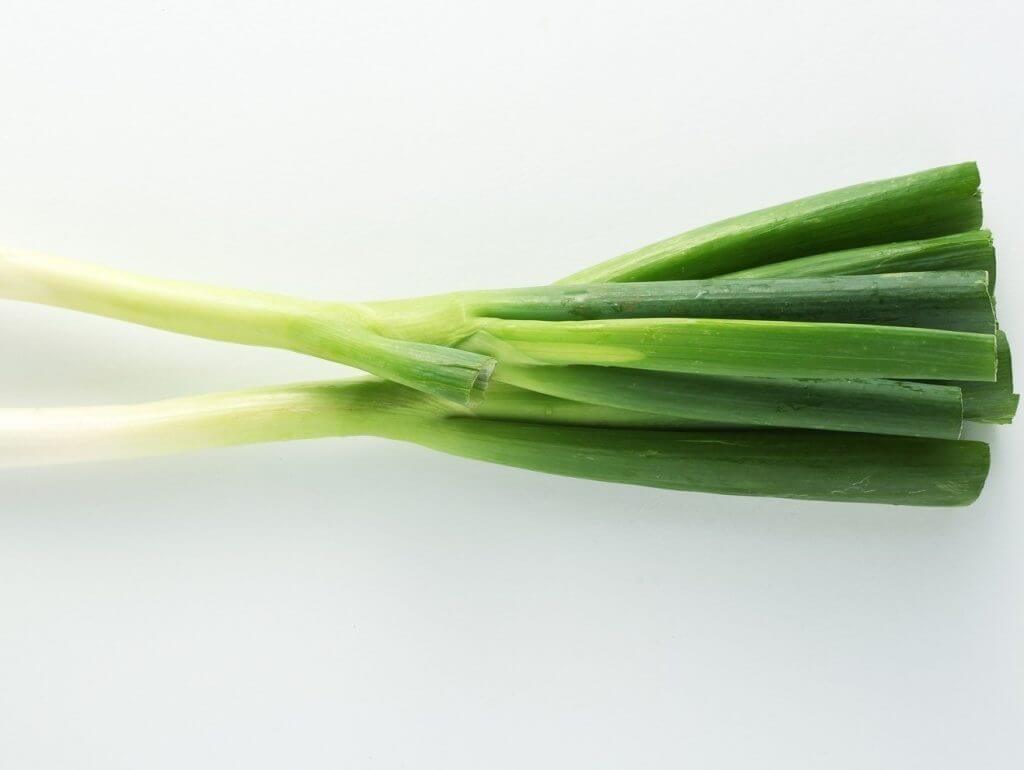 Shiro-negi
Shiro-negi
These are also known as “long onions” or Japanese leeks. These onions are common in East Japan, characterized by the thickness and large white space. Usually, the white portion is eaten. It softens and has a sweetness when it is heated. It also has spicy, onion components and the white portion has high allyl sulfide content, which is known for aiding in digestion, so it has more medicinal effects than leafy onions.
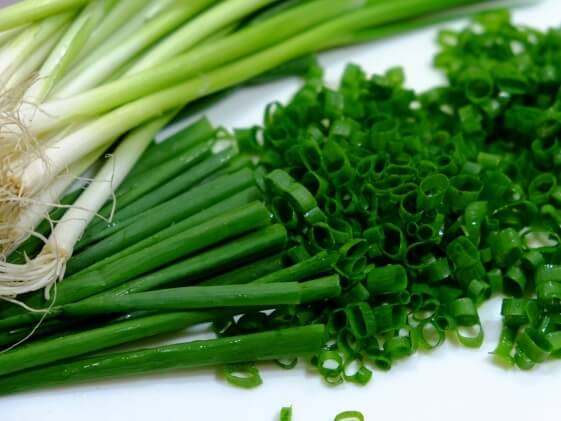 Ao-negi
Ao-negi
Ao-negi is also called leafy onions and refers to onions with more green space. It mainly grows in Western Japan, is thinner than shiro-negi and is characterized by how it branches near the root. The leaves are soft, it has a unique onion scent and is great for condiments, stir-fry and miso soup.
Bannou-negi
This is a brand name for small green onions. Small green onions are young ao-negi. They are generally 5 mm in diameter and 50 cm long and used for condiments. Fugu-negi (Yasuoka onions) is another type of small green onions.
Kujo-negi
Kujo-negi are green onions indigenous to Kyoto and have been growing mostly in the Kujo Village (currently Sakyo-ku of Kyoto city) since the Nara era. It is soft and has a pleasant taste and is perfect for dressed fish/vegetables (aemono), condiments and hot pot dishes. There are 2 types: Light-yellow (hoso-negi) and black (futo-negi). The texture is soft and there is a sweet element, and the inside of the leaves is slimy.
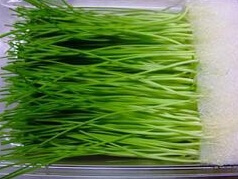 Me-negi
Me-negi
These are green onions harvested immediately after sprouting. They are 6-10 cm in length and look like pine needles. They have a refreshing taste that isn’t as spicy, so it is used as a condiment or a sushi topping.
Wakegi (Tufted stone leek)
This is a mixed breed of green onion and white onion mainly found in Kansai and further west. It’s not as pungent and the fragrance is more subtle without the unique onion spiciness and there is an element of sweetness.
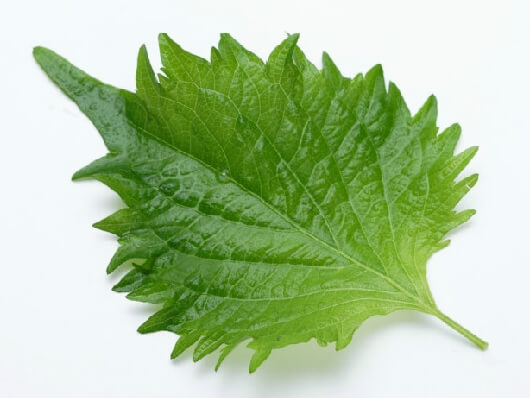 Ooba
Ooba
This is the perilla leaf (shiso), but generally, it is only called green shiso when used in full leaf form as a potherb. You’ll find Shiso all year long, but its true season is summer. It has a high nutritional value and as a vegetable, it has an extremely high content of β-carotene, B vitamins, vitamins C, E and K, iron, calcium, potassium, zinc, etc. Lately, it has also become a point of focus due to its high antioxidant effects. Also, the fragrant components and sisoaldehyde stimulate the olfactory cells, promoting secretion of saliva and gastric juices, improving appetite and promoting digestion absorption. Perilaldehyde also has bactericidal and antiseptic effects.
What is the difference between Shiso and Ooba?
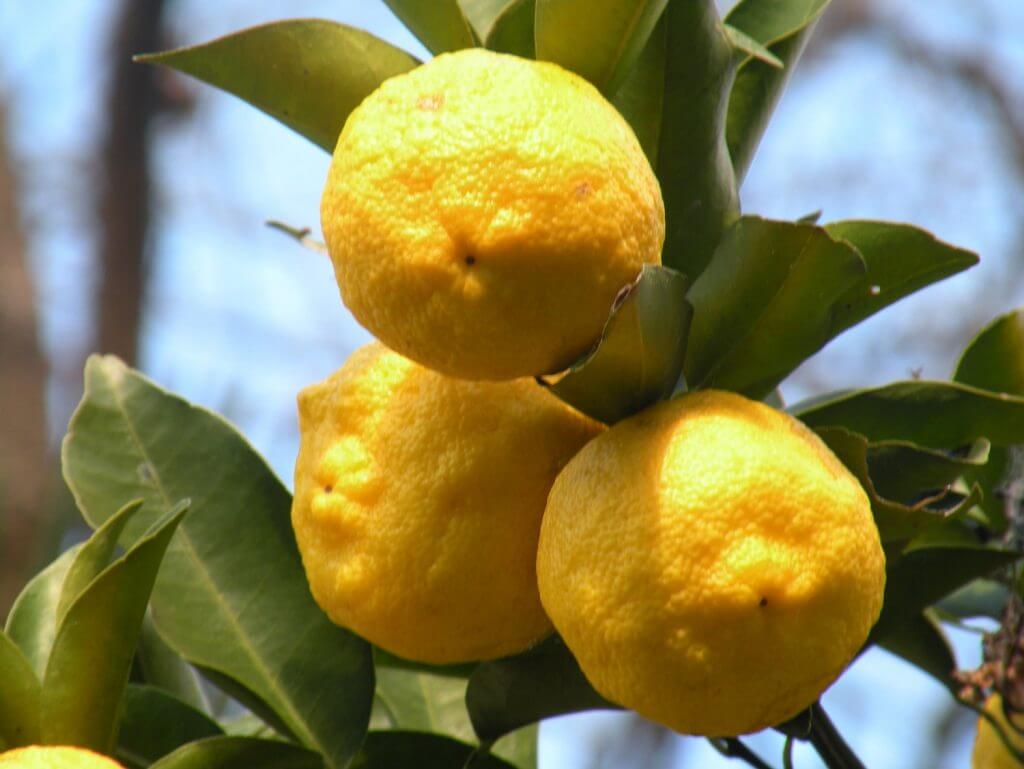 Yuzu
Yuzu
It is about 100-120 g in size and has a rugged, yellow rind. Yuzu is a Kosan citrus (fragrant/acidic citrus) fruit* with a unique fragrance and acidity and plays a role in bringing out the flavor of a variety of foods.
*Citrus fruits not good for eating raw, with stronger acidity than the typical tangerine type of citrus, are called “Kosan citrus”. The most common are lemon and lime. They have a nice fragrance so they are squeezed and added as seasonings or used for juice.
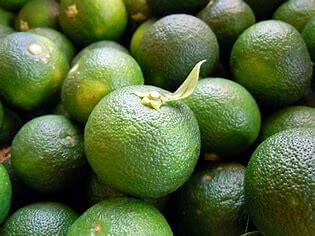 Sudachi
Sudachi
Sudachi, from the same kosan citrus family as yuzu, weigh 30-40 g. They are a famous specialty of the Tokushima prefecture. They are characterized by brisk acidity and refreshing aroma.
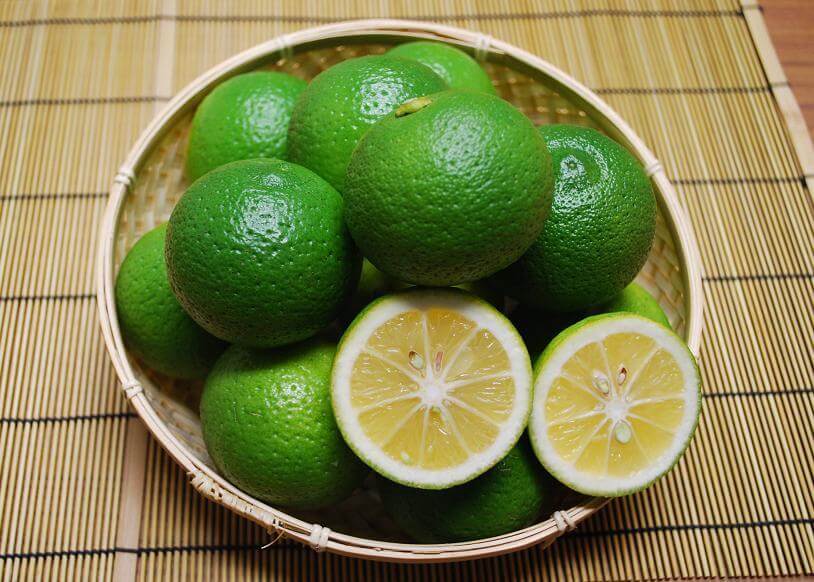 Kabosu
Kabosu
Like sudachi, kabosu are also from the same family as yuzu and are similar in looks, but they are much larger, weighing 100 to 150 g and have even stronger acidity. They aren’t just sour, they also have a gentle sweetness. A specialty of Oita prefecture, they are often used to add flavor to fugu (blowfish) dishes, hot pot and grilled fish.
Hebesu
This kosan citrus from Hyuga, Miyazaki is similar to the kabosu and sudachi. It is characterized by its thin rind, few seeds, fresh acidity and unique fragrance.
Daidai
The mature Daidai fruit doesn’t fall from the tree as easily as other edible fruits, so it is used as a decoration for the New Year as a symbol of good fortune. While the juice has a hint of sweetness, it has a strong acidity and also a bitter element.
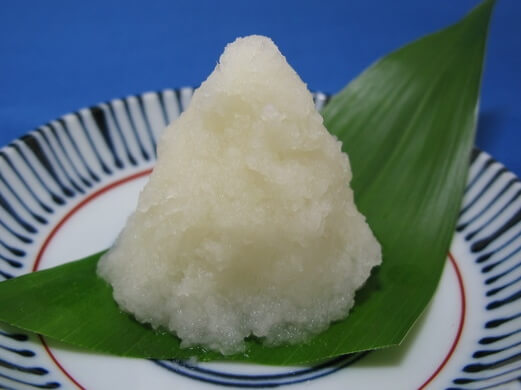 Daikon-oroshi (Grated daikon)
Daikon-oroshi (Grated daikon)
This is grated daikon radish. When using daikon radish as a condiment, the tip is used if a more pungent flavor is desired and the area closer to the base of the leaves is used for less spiciness.
Momizi-oroshi (Grated daikon and chili)
Make several holes in a peeled giant white radish with chopsticks, stuff them with red pepers, stem and seeds removed, after reconstituting them with lukewarm water, and grind the radish together with the peppers.
Bainiku (Plum pulp)
This is the part of pickled plums with the seed removed.
Mominori
This is finely ground, lightly toasted laver.
Next, we would like to introduce the typical sushi dishes that use these types of condiments. Here we explore the uses and potential uses of the major condiments.
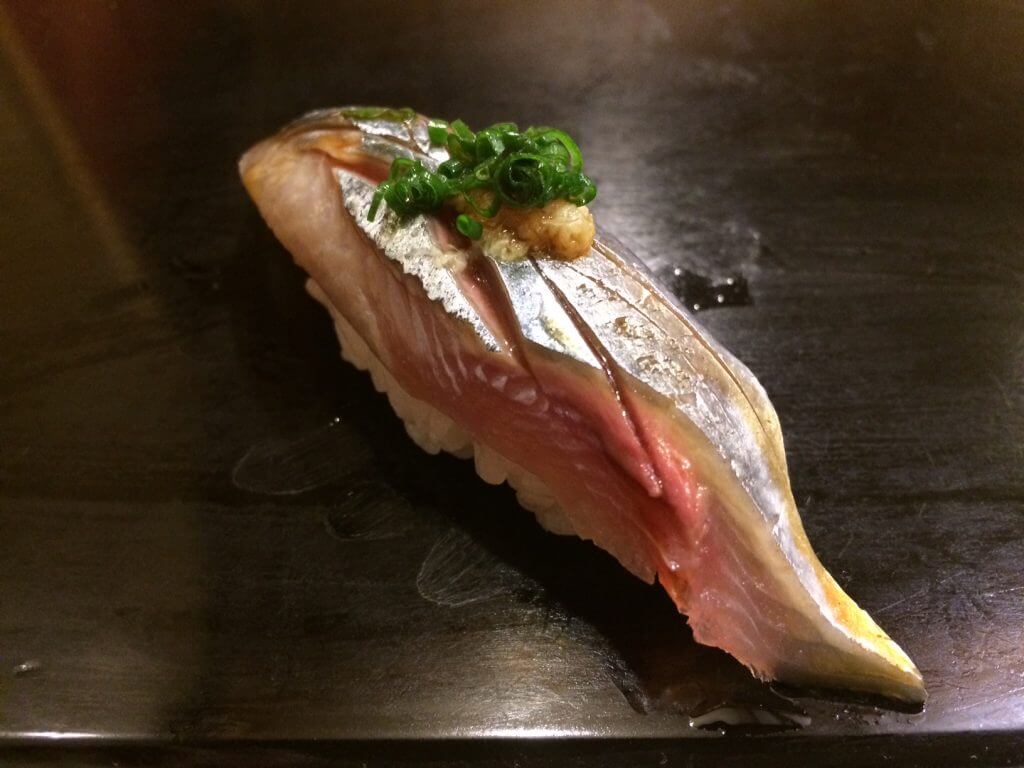 Mackerel・Pacific saury・Sardines
Mackerel・Pacific saury・Sardines
Just by serving with grated ginger or grated ginger and green onions, the peculiar taste of mackerel fat completely transforms into something elegant. Grated ginger is effective in accentuating the unique umami flavor of sushi toppings and is also used with Pacific saury, sardines and horse mackerel. Most sushi restaurants use it in a standard way.
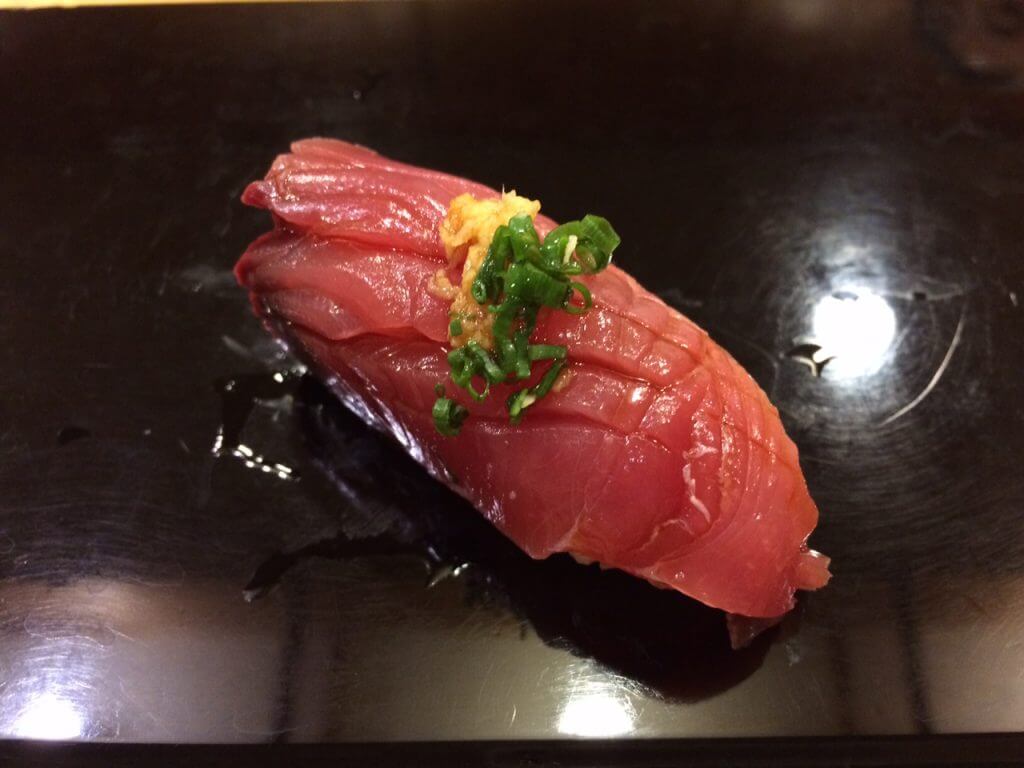 Bonito
Bonito
In order to cancel out the raw odor of bonito, sushi chefs smoke the fish with straw and typically treat it with green onion and grated ginger.
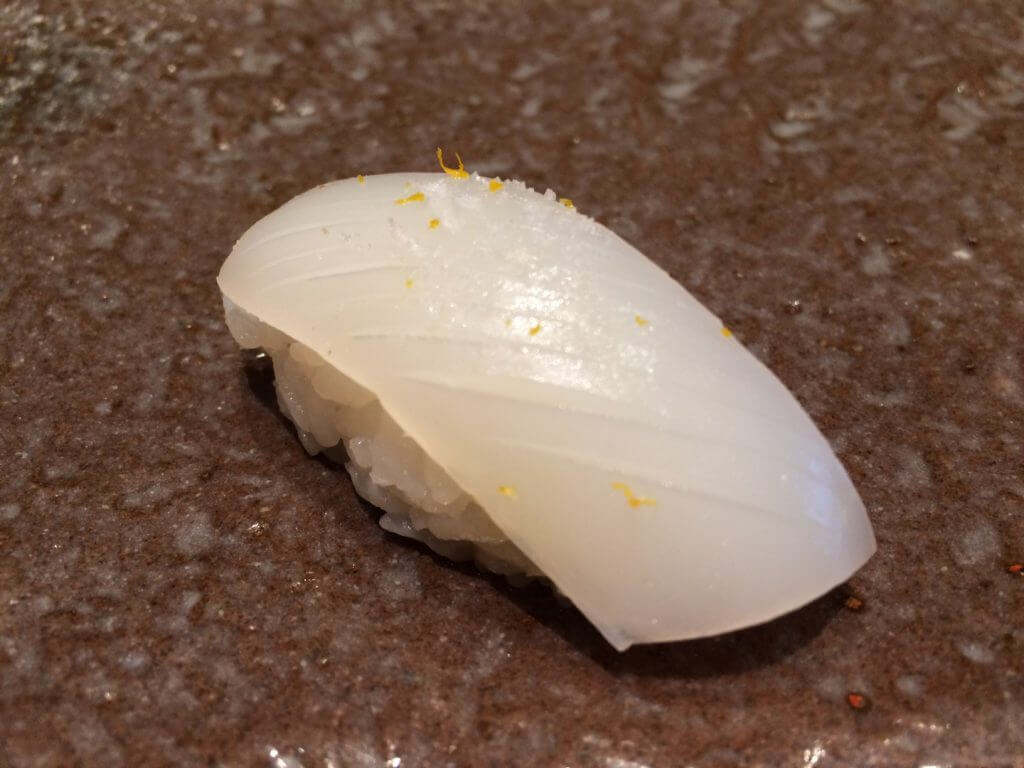 Squid
Squid
How to prepare squid is something that each sushi chef has to decide. Some use salt and sudachi for a refreshing sweetness. Others sneak Oba between the topping and shari to bring out the natural umami of the squid.
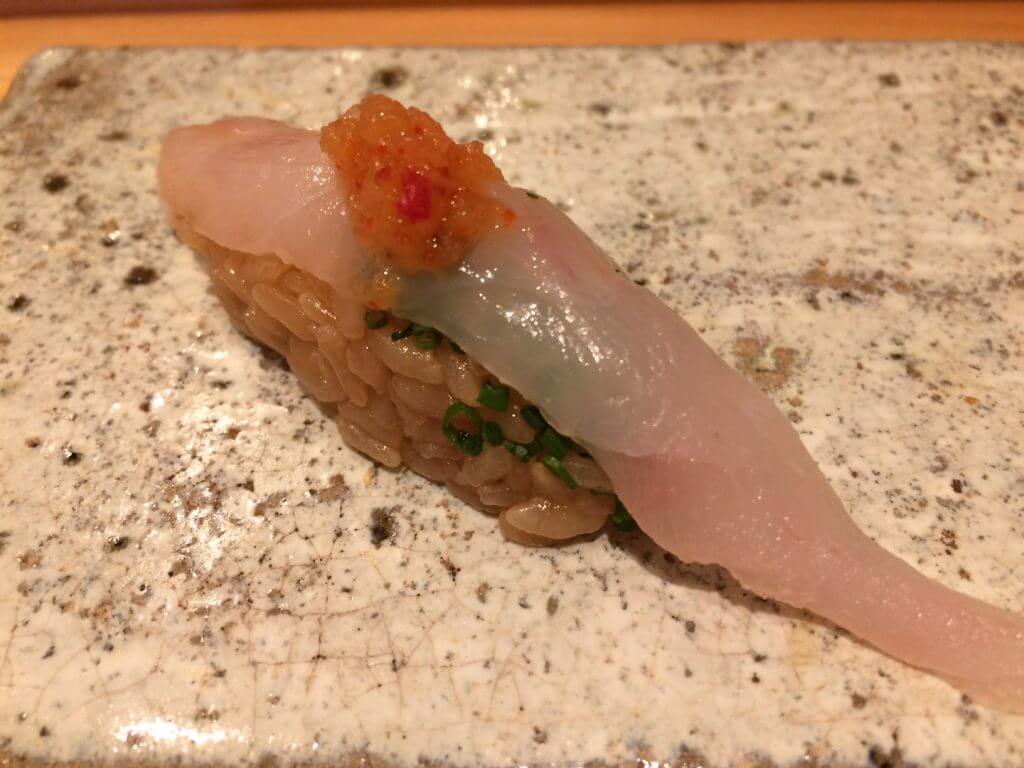 Blowfish
Blowfish
Fugu (Blowfish) known for its light and delicate taste, so it’s not suitable to use condiments that are too strong. Fugu-negi is ultra-thin and soft with a nice fragrance without being overbearing and it’s the best onion for the delicate blowfish. And instead of nikiri (boiling down), it goes well with mellow, acidic Ponzu*, which brings out the flavor of fugu.
*Traditionally ponzu refers to a vinegar sauce made from citrus fruits like kabosu, but “ponzu soy sauce” (traditional ponzu sauce combined with soy sauce and mixed with bonito stock and kelp stock) is also generally known as “ponzu”.
Pen shell
Sushi chefs struggle to bring out the sweetness of the pen shell, which is stronger than that of scallops. Adding the oba leaf between the topping and the rice does wonder in bringing out the sweetness and umami.
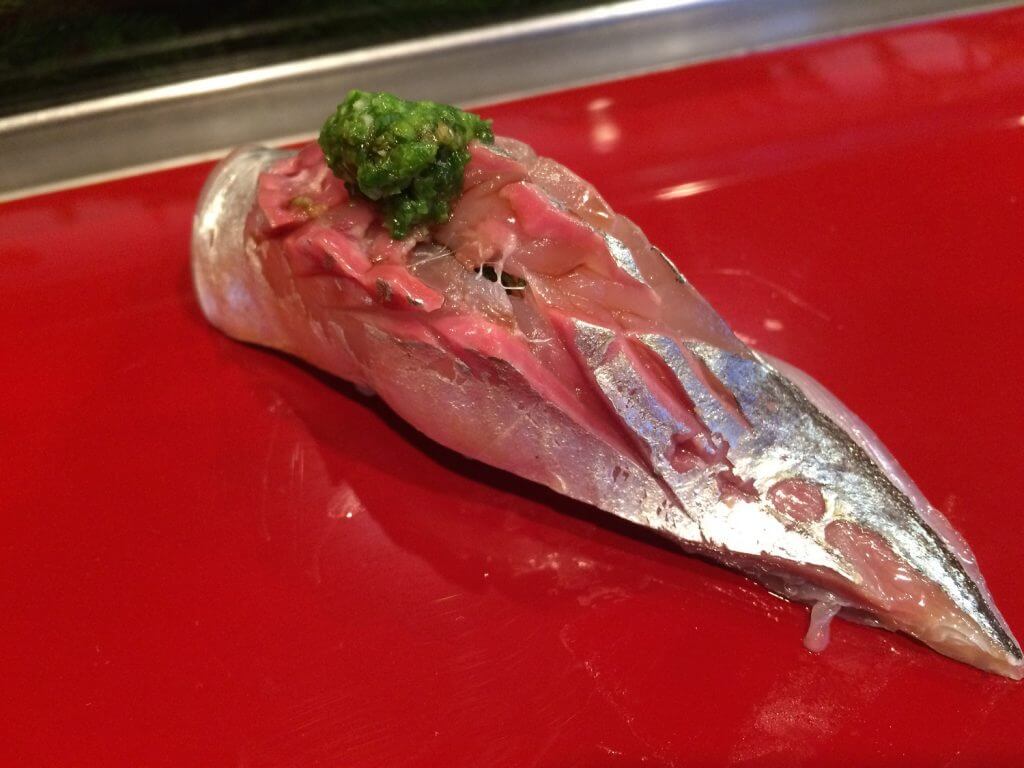 Horse mackerel
Horse mackerel
This was the brainchild of the legendary sushi chef, Shuzo Okada, in order to emphasize the umami of fish with peculiar tastes such as horse mackerel. Just a dash of deep green seasoning made from grinding down Asatsuki and ginger is placed on top of the sushi topping.
In addition to making the sushi look beautiful, it also gives toppings with delicate tastes a more distinct flavor, subdues the persistency of fat. As I mentioned before, too much flavoring deviates from traditional Edomae sushi, turning the dish into “Sousaku-zushi” or “creative sushi”. Of course whether or not to use condiments is up to how the sushi chef feels. And a sushi chef may not use the same condiments every time. Considering each of the individual condiments used, you can’t help but feel the depth of Edo-style sushi.
Related contents:
Share this article